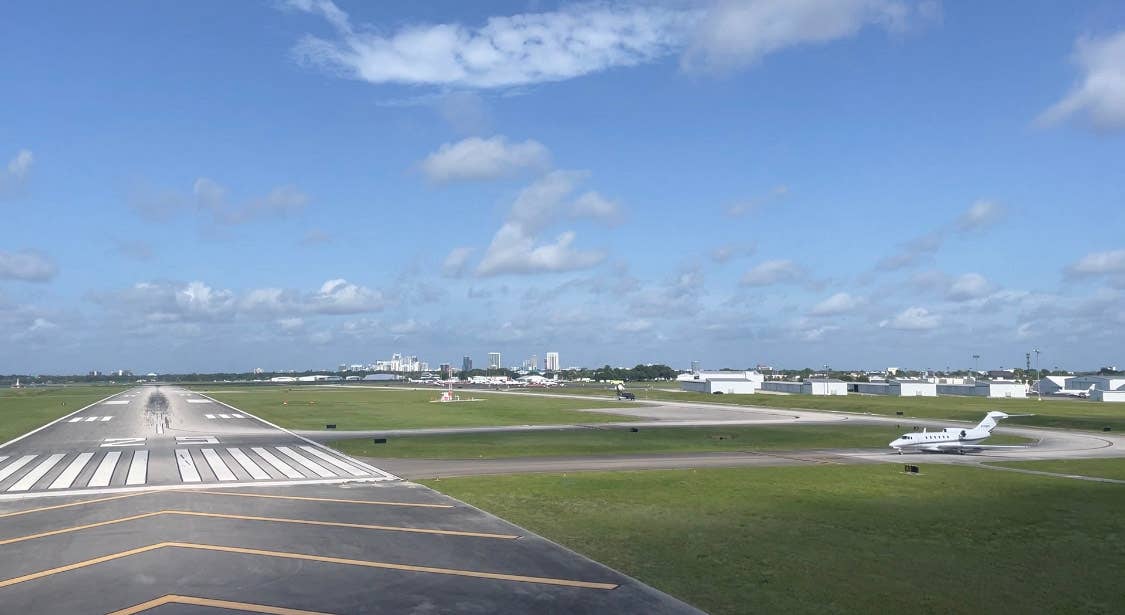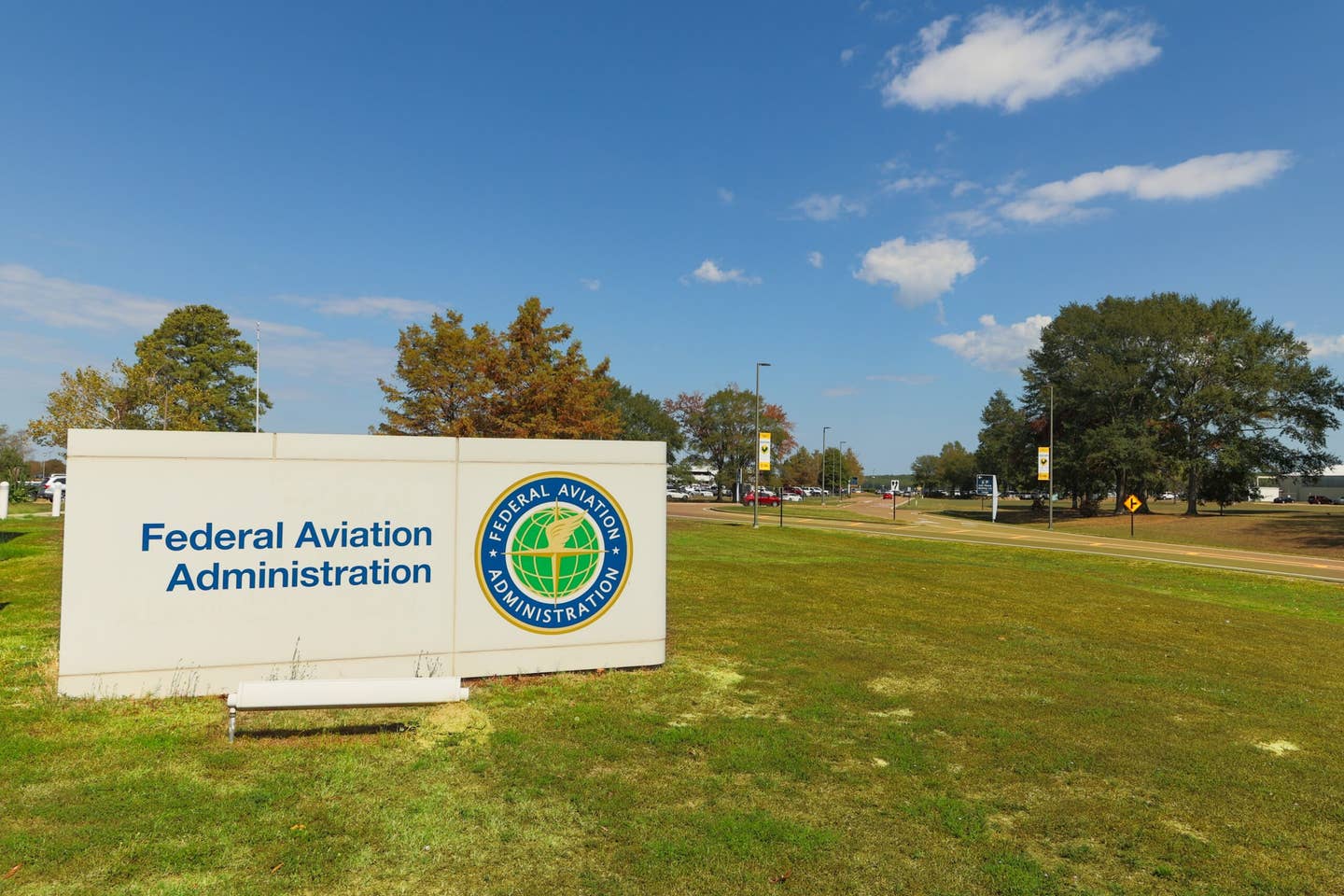More Strong Growth Forecast for BizAv Sector in 2023 Onward
Honeywell’s annual survey models the next 10 years for the industry—and it still shows good news in spite of financial and geopolitical headwinds ahead.

Honeywell revealed its 2022 Global Business Aviation Outlook on Sunday evening ahead of the opening of NBAA-BACE in Orlando. [Courtesy: Julie Boatman]
With challenges and uncertainty that continue to loom globally, the market for turbine business aircraft remains stubbornly robust, according to the recent annual survey compiled and crunched by Honeywell Aerospace’s analytics team.
The technology giant released on Sunday its 31st annual Global Business Aviation Outlook at the 2022 National Business Aviation Association’s Business Aviation Convention and Exhibition (NBAA-BACE), with the good news—it forecasts up to 8,500 new business jet deliveries totaling $274 billion for the period from 2023 to 2032. The report registers a 15 percent increase in deliveries and expenditures when compared to last year’s outlook. The total moves the forecast back to 2019 levels with “fleet addition rates doubling from last year’s reported intentions,” according to the company’s statement.
The global pandemic altered use of private jet travel, and apparently that increased utilization will continue to drive corporations and individuals to order new turbine equipment.
“The business aviation industry is greatly benefiting from a wave of first-time users and buyers due in part to changing habits brought on by the COVID-19 pandemic,” said Heath Patrick, Honeywell Aerospace president, Americas aftermarket. “The business aviation sector is expected to recover to 2019 delivery and expenditure levels by 2023, which is much sooner than previously anticipated.
“Demand for new business jets is as high as we’ve seen it since 2015, and we expect high levels of demand and expenditures for new aircraft for several more years.”
Behind the Numbers
FLYING spoke with Javier Jimenez-Serrano, strategic planning manager for Honeywell, ahead of the announcement to gain further insight on several key elements from the 2022 report. These include:
- Deliveries of new jets in 2023 are expected to be 17 percent higher than in 2022—already a stronger year than the two years prior.
- Respondents reported projected deliveries an average of 3 percentage points higher in their five-year purchase plans.
- Fleet additions have risen for the second year in a row, double the 2021 rate and averaging 2 percent of the total fleet.
- Growth year-over-year is projected to go up 2 percent annually
We asked Jimenez-Serrano about the timing of the survey—which gathers the data and responses that Honeywell’s team analizes—and whether that timing allowed it to take into account financial headwinds, including the increase in the base rate and projected greater cost of capital now foreseen in 2023.
The changes may have just registered into real actions in the market, he said, but “the trends are not new.” Those operators targeted for the report watch these trends closely and have already incorporated those challenges into their decision-making matrix, according to Jimenez-Serrano.
Any Surprises in the Data?
Overall, the strong forecast is “very good news,” he said, and pointed to several elements that were unexpected: “To see 15 percent jumps in the 10-year forecast, reaching 8,500 in the next ten years” was one of them. While it’s not Honewell’s highest forecast—numbers match the report in 2015 where the forecast for new jet deliveries hovered around 8,500 as well, and 2018 where that figure stood at 8,200, according to Jimenez-Serrano—“this goes back to a pre-covid and optimistic pre-covid times.”
Also, the analysis confirms the reports from the OEMs, that most of their production lines are sold out through 2024 and beyond.
Another perhaps unanticipated outcome: Most operators expect to keep up the same level of flying. “We’ve seen a surge in demand for flights, and also used aircraft, so the question has been… is this pent-up demand or new users?” he asked. In his estimation, based on their data, it’s likely new users forming much of the increase in demand.
One more key data point: Roughly 64 percent expect to fly the same amount of hours in 2023 and only 4 percent expect to fly less, with the remainder expecting to fly more.
Sustainability Reports
FLYING also asked what percentage of operators are currently using sustainable aviation fuel (SAF) on a regular basis–and for what percentage of their operations.
Jimenez-Serrano responded that this was a relatively new area of inquiry for the report. “It’s the second year we’ve asked questions related to [sustainability]; the first year, we put it in our report [in 2021] and put in a baseline in order to glean trends. What do we see from the survey? Half of the operators are doing something today to tackle [sustainability targets].” And, that figure is 30 percentage points higher than last year.
What do they say they are doing? They’re taking slower flights—instead of high-speed cruise, they’re flying at a long-range cruise speed, and increasing the number of passengers on each jet.
“When we ask them what the expectations are, in the future, that number [rises to] 60 percent,” those operators who will alter their mission profiles to fly more efficiently.
As for tools they use today, SAF is number one—with the purchase of carbon offsets secondary to that. “They express some frustration in the availability of SAF today,” said Jimenez-Serrano, “but they express hope.”
However, fuel-efficiency is not a clear driver for purchase decisions—yet. Nor do operators project in their five-year plans the acquisition of any aircraft using alternative powerplants and/or fuels beyond SAF.
“We asked in a hypothetical future—-whether it is electric, hydrogen, [or another] clean form of power,” said Jimenez-Serrano. They responded, “‘not here in the short term.’”
When thinking about a future aircraft, Honeywell asked what parameters would drive the choice. “Most of them mentioned range,” he said. “But then there were mentions of speed and cabin volume, and brand—being able to stay within a brand that they know.”
One other element in purchase decisions holds true, as well. The smaller the aircraft, the more respondents care about direct operating cost. The larger the aircraft, the more that decision depends on speed and range.
Regional Growth
FLYING also asked for details regarding regional differences in what the survey found. “Latin America and APAC have increased the expected share of deliveries,” Jimenez-Serrano said, “And Latin America is curious—there’s a big market in Brazil, [along with Mexico and Argentina].”
As for the Asia Pacific region, he said, yes, the growth is there, but it’s coming from a very small base. “[The region] is not expected to take over Europe or North America any time soon.”

Sign-up for newsletters & special offers!
Get the latest FLYING stories & special offers delivered directly to your inbox






